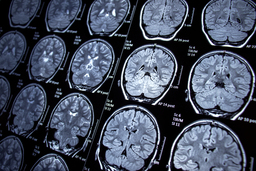Joint Optimization of Magnetic Resonance Imaging (MRI) Sampling Trajectory and Image Reconstruction
TECHNOLOGY NUMBER: 2022-093

OVERVIEW
MRI scans allow control and interpretation of data acquisition when producing an image- Traditional MRI data acquisition relies on a trial-and-error process of signal acquisition
- Researchers propose an optimization based strategy to improve scan quality and duration
BACKGROUND
One unique advantage of magnetic resonance imaging (MRI) over other types of medical imaging is the ability to control and interpret data acquisition to influence the reconstructed image. K-space is the name of the data matrix obtained directly from the magnetic resonance scanner before the processing and reconstruction of the final image through computational analysis. The sampling trajectory of MRI scanning determines the raw signal acquisition strategy and can influence imaging quality and speed. Traditional sampling trajectory relies on a trial-and-error process to heuristically determine signal acquisition, an approach that can introduce image artifacts when obtaining fast imaging.
INNOVATION
Researchers at the University of Michigan have proposed a robust optimization-based strategy for trajectory design. This sampling optimization considers non-Cartesian trajectory options which provide a clear improvement over existing, Cartesian-based approaches. The process follows the principles of machine learning, or the use of data and algorithms to facilitate increased computer accuracy when taking on complex tasks. This new software utilizes a large dataset to build an algorithm which learns optimal sampling trajectory and reconstruction parameters by defining image quality as the 'objective function'. The optimization of sampling trajectory and the reconstruction method positively influence each other, synergistically producing excellent images. This new approach builds a training and optimization framework which considers physical constraints and imperfections of magnetic resonance scanners to produce scans with higher image quality and decreased scanning times.